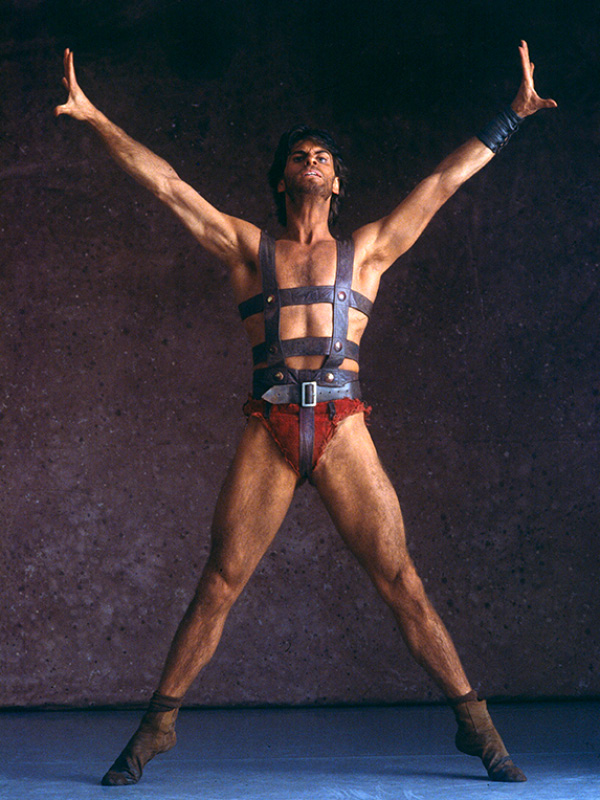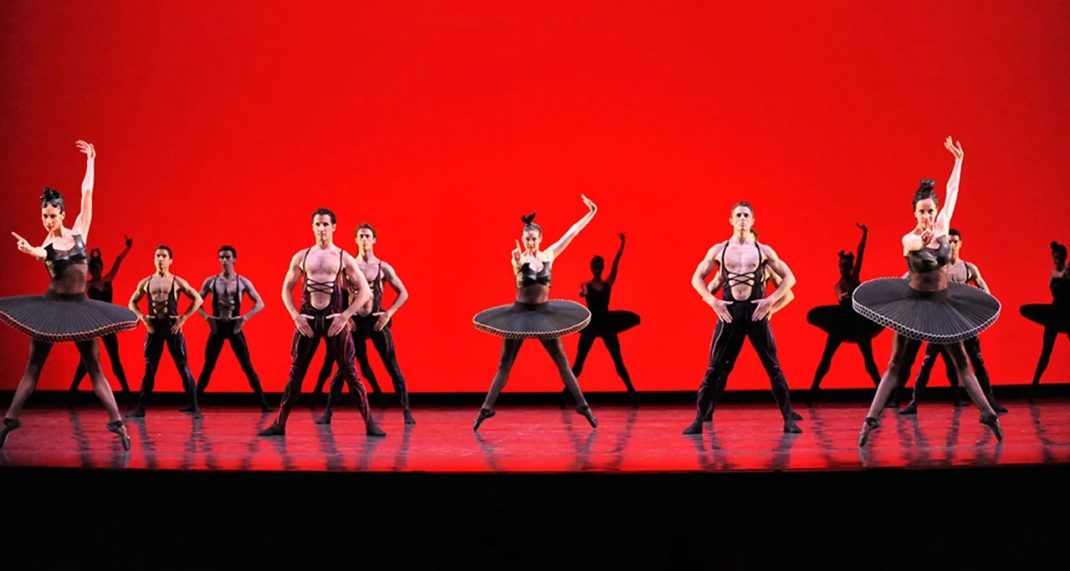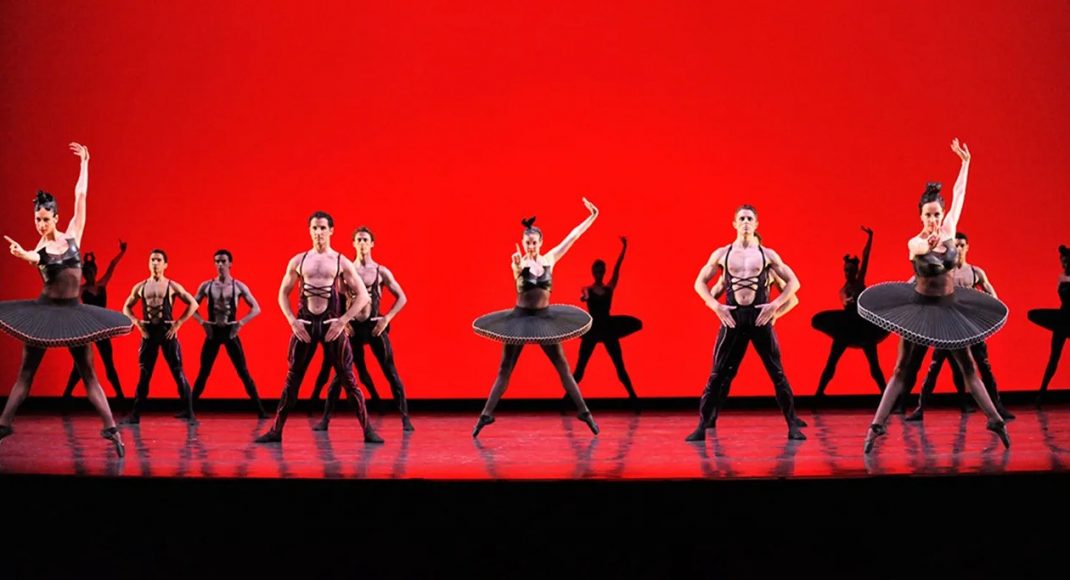And we danced, a three part documentary from the ABC produced by WildBear Entertainment, looks at the first six decades of the Australian Ballet. The series makes use of archival footage held by the Australian Ballet, and that footage is complemented by photographs and interviews with former and current company staff and dancers, and with commentary from Ita Buttrose, current chairperson of the ABC.
I was originally going to wait until all three episodes had been screened before making comments. But the second episode, covering the two decades of the eighties and nineties, was so full of memorable moments that I decided I just had to comment on the second episode and mention some of those moments—the ones that especially moved me in some way.
It was always going to be hard to cover in 58 or so minutes everything of significance that occurred over two decades, especially when the two decades covered in the second episode were tumultuous in so many ways. There was the strike of the early 1980s and the various changes of artistic directorship that ensued; the AIDS epidemic; Paul Keating’s Creative Nation and the strong arts funding that developed under Keating; the era of Maina Gielgud and her eventual departure from the company; the arrival of Ross Stretton and his very different management style and artistic aesthetic; and more.
And we danced needed to be selective in what it covered in detail, but what I found especially engaging was the examination of how the company began to move from a pioneering company in its earlier years to one that was a mature arts organisation. While there were many ways in which an Australian identity began to emerge, and various social and cultural contexts were mentioned, particularly poignant were the comments by Stephen Page as he talked about Bangarra Dance Theatre and the Australian Ballet working together on Rites under the directorship of Ross Stretton.
Then, I couldn’t help but be impressed by the incredible range of choreography that those of us who were lucky enough to have been audience members at the time were able to experience. One of the most interesting sections concerned the last program curated by Maina Gielgud before she left the company. Her triple bill of Stanton Welch’s Red Earth, Meryl Tankard’s The Deep End, and Stephen Page’s Alchemy was so strongly Australian and the comments on why (or how) this program happened were well contextualised. And of course it was great to see footage of Stanton Welch’s Divergence, another exceptional work from the Gielgud period.
I also enjoyed the discussion of Spartacus. It has never been one of my favourite ballets, neither in the Laszlo Seregi (Australian Ballet premiere 1978) version nor the more recent one by Lucas Jervies. But looking at the brief footage shown of the Seregi production I was bowled over by Steven Heathcote in the main role. The drama he injected into every movement was just brilliant. And then there was the wonderful story of the poster with the sexy image of Heathcote that was consistently stolen when the production was taken to the US.

It was also interesting to see and hear comments from former dancers and directors, especially Marilyn Rowe and Marilyn Jones who played major roles in the 1980s. More of the full project later.
Michelle Potter, 26 July 2021
Featured image: Scene from Stanton Welch’s Divergence. Still from And we danced.


Thanks for this. It is poignant to read of this capture of The Australian Ballet.
I read your report only minutes after hearing the news of the passing yesterday of Philip Chatfield, aged 93, in Brisbane.
In preparing his obituary I looked at a short NFU film made by Kathleen O’Brien, dance teacher here in New Zealand. Our Stars in Ballet – shows Rowena Jackson, husband Philip Chatfield, and Alexander Grant in footage from 1959 when they were back in New Zealand after high profile careers in The Royal Ballet in UK. (Rowena & Philip settled here – he was later to become artistic director of RNZBallet, and Rowena to direct the National School of Ballet, whereas Alex stayed in UK.)
It is intriguing to see what the camera can capture of the qualities in each dancer back in the day … arabesques may not have reached the sky, but line and musicality and expressive rapport between dancers have never been outdated, though they can be rarer to find nowadays. One could wonder what today’s ballet aesthetic and production values will look like when viewed on film 60 years from now.
Thanks Jennifer. Yes, it is fascinating to see footage shot earlier. The first section of And we danced (which I haven’t as yet commented on) contained footage from the Borovansky era. I thought it stood up quite well even today. The Borovansky Ballet was a very theatrical company and that makes a huge difference I think.
I was sorry to hear of the death of Philip Chatfield. He and Rowena Jackson came to Australia in 1958 with that momentous Royal Ballet tour that then went on to New Zealand, which you mention. It was a very exciting tour and was the first time I had seen a company from overseas.
1959 was a momentous year for dance in New Zealand — not only the mighty Royal Ballet with Fonteyn et al ( I slept from Friday night till Monday morning in His Majesty’s Arcade waiting for the box office to open for The Gods … Fonteyn danced Giselle on that Monday night and my life turned a corner … there were tears ) but also in the same year Kerridge & Associates brought The Stars of the Bolshoi Ballet — a troupe of some 12 soloists dancing their feet off, and brought us onto ours, phenomenal ( I think something you’d never have seen on any single night in Moscow, and where I first learned what a standing ovation feels like – there were cheers I’d never heard in a theatre before, though nowadays they’re two-a- penny). Not to be outdone, in the same year Poul Gnatt and Russell Kerr mounted the United Ballet season of New Zealand Ballet & Auckland Ballet Theatre, with a programme of Dream Visions ( from Denmark), Prince Igor Polovtsian Dances, LesPatineurs ( staged by Philip Chatfield & Rowena Jackson) and the talisman Prismatic Variations, choreographed by Kerr and Gnatt. Sad to say that classic work seems to have drifted away since, but I personally have hopes that Ballet Collective Aotearoa will restage it some day. It encapsulates all that the pioneering New Zealand Ballet had achieved to that point.